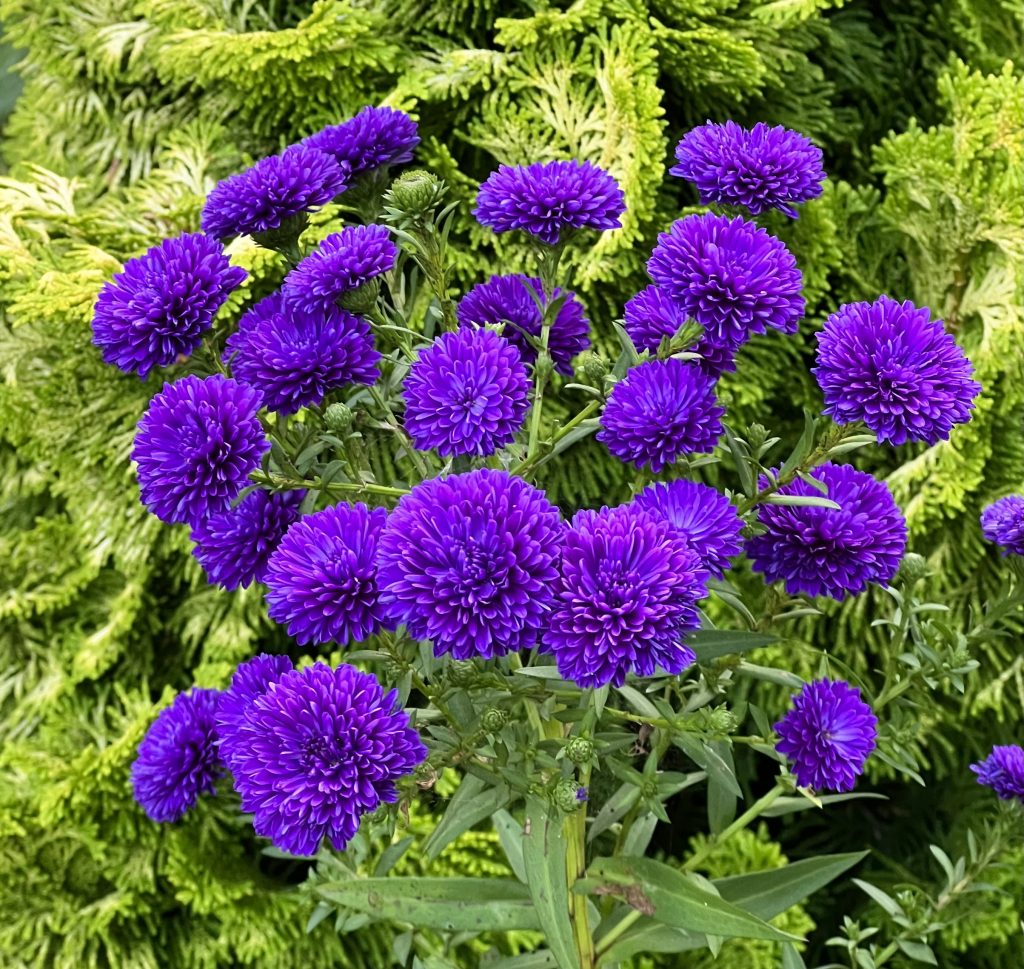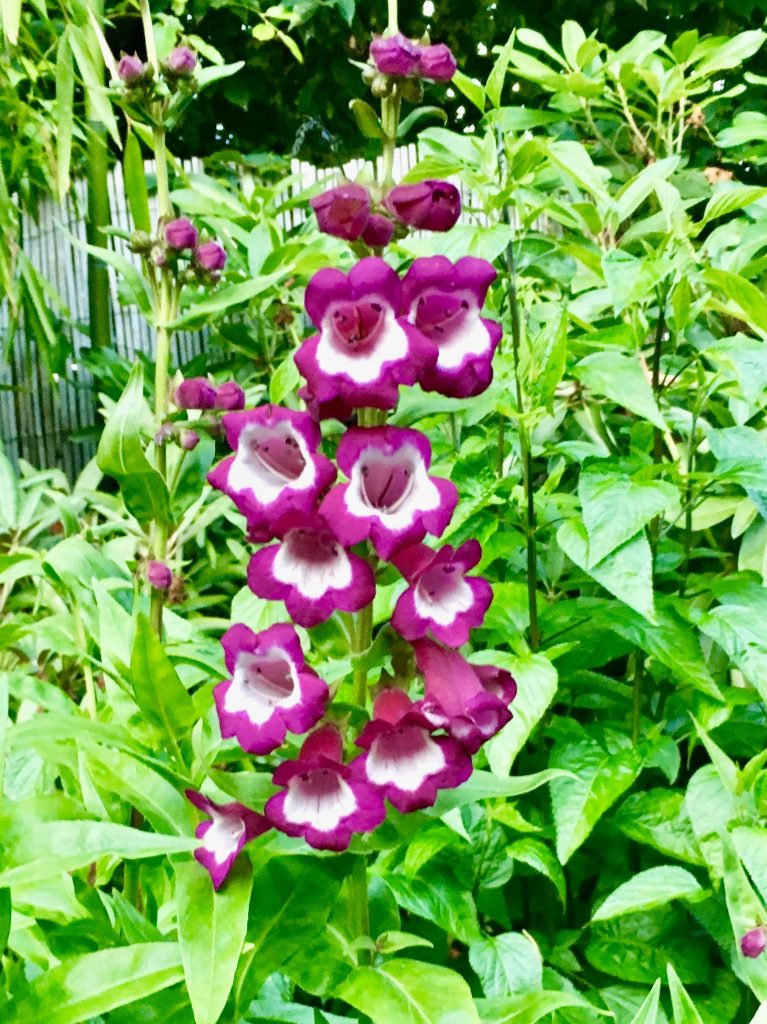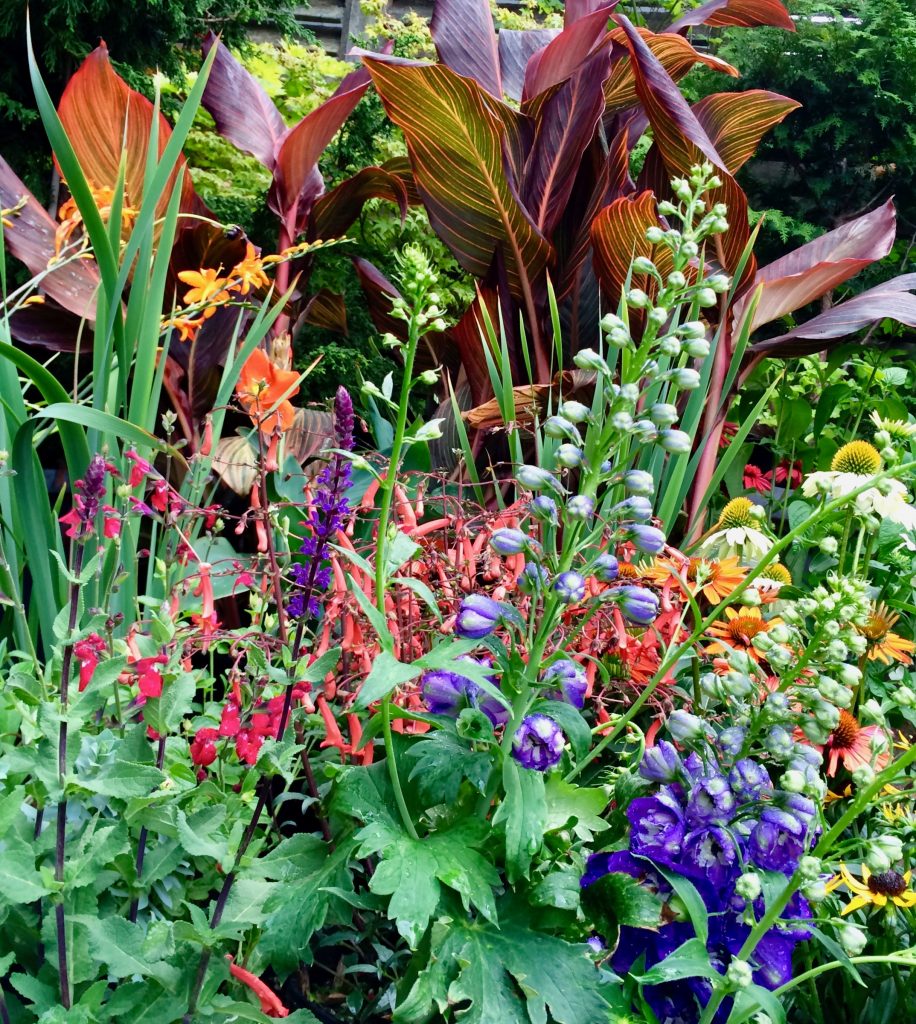Hummingbirds are one of the most popular and esteemed visitors to any garden. Why are we so fascinated by them? Is it the familiar humming sound they make as they hover with the precision of a drone? Or is it the way they dart from flower to flower with energy and determination?
If you want to attract hummingbirds to your garden, plant what they love. These intriguing little birds will appear like magic if you give them the goods. The same flowers you plant to attract hummingbirds will attract other friendly pollinators that want to join in the flower power.
Not all hummingbirds migrate south during the winter. Those that do, put on weight before their long migration, expending more than half their body weight in reaching their destinations. Those that don’t leave, seek late-blooming perennials such as salvia that bloom until frost. During wintertime they search for any nectar-rich flowers that might still be blooming and will also frequent well stocked humming bird feeders.
Here are some hardy summer and autumn blooming perennials that you can plant now. They will keep hummingbirds around and also refresh your garden when other perennials are declining at the end of summer.
Asters
Asters bloom profusely from late summer until frost. Their dense habit, bright green foliage, and delicate flowers give a tired perennial border a fresh look just when it needs it the most. This is a great choice for mass plantings.
Nepeta (catnip)
Nepeta blooms from late spring until frost making it one of the longest-blooming perennials in this region. Cutting it back mid-season will keep plants tidy and force a new flush of foliage and flowers. There are several varieties to choose from.
Salvia guaranitica ‘Black and Blue’ (Black And Bloom Salvia)
This variety of salvia is a favorite among hummingbirds and its grass-green foliage and deep blue flowers are a dramatic addition to a perennial border. Racemes holding delicate black buds emerge at the end of waist-high woody stems making them easy for hummingbirds to access and giving onlookers an excellent vantage point.
Agastache (Hummingbird Mint)
The name pretty much says it all. Most varieties bloom throughout summer and into fall. Their tidy upright habit makes them a good vertical feature in a perennial border. They are easy to grow and a multitude of tiny flowers on spire-like racemes have a luscious scent.
MORE IDEAS
Upgrading your garden this spring is a great way to prepare for summer!
If you’re looking for more ideas, please contact me for a design consultation to learn about landscape design or how to maximize the impact of plantings for any spot in your garden.



